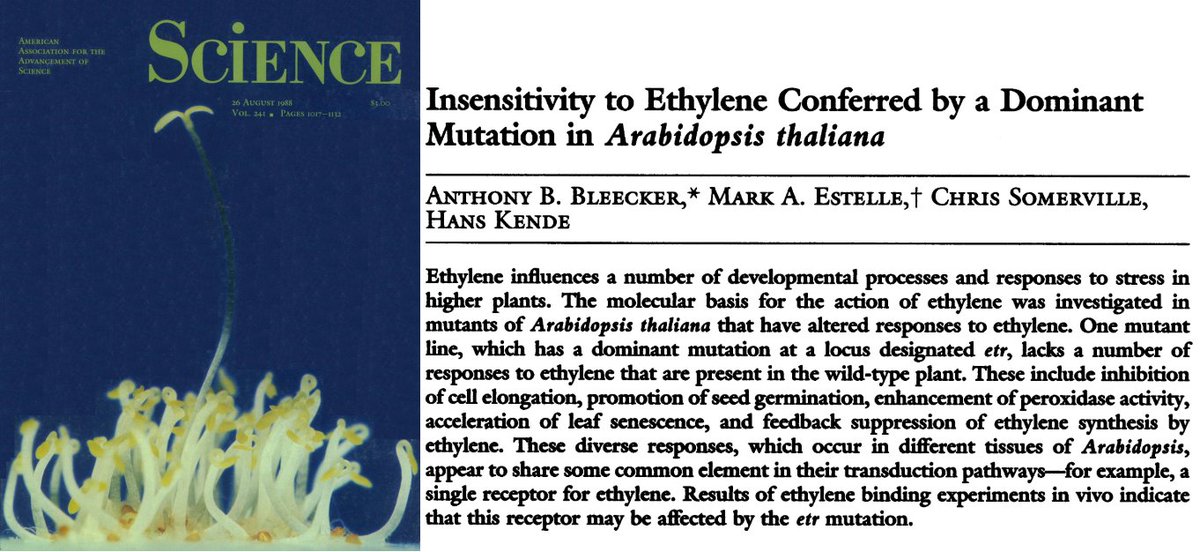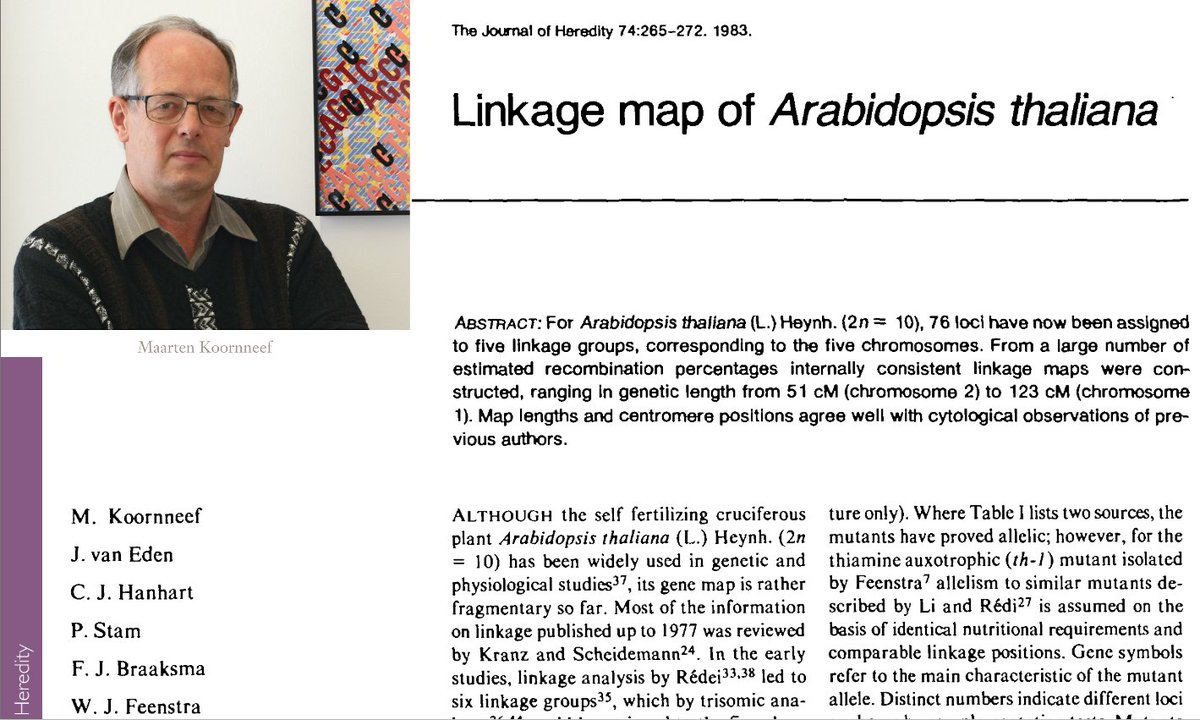#PlantScienceClassics #12: The stem cell-maintaining CLAVATA(CLV)-WUSCHEL(WUS) feedback loop. In 1999/2000 the labs of Elliot Meyerowitz & @simonrdg published 2 joint @ScienceMagazine papers describing a self-regulating signaling loop that maintains the stem cells of plants. 

Plants continue to grow for their entire life due to the activity of stable pools of stem cells. The shoot apical #meristem (SAM) is the stem cell niche responsible for producing all above ground cells and is located at the tip of the plant’s stem. 

The number of stem cells in the SAM is maintained constant, despite new formed cells continuously leaving the stem cell pool to build new tissues & organs. And like the stem cell number is stable, so are the number of organs formed, e.g. flower organs (see classic #1, ABC model). 

One early Arabidopsis mutant with a visible alteration in stem cell number was clv1, which @OttolineLeyser & Ian Furner showed had a bigger SAM producing more organs, most notably 4 carpels in its flowers instead of 2. 

CLV1 turned out to be a receptor-kinase, & mutations in 2 more clv genes share a similar ‘bigger SAM - more organs’ phenotype. These are the receptor-protein CLV2 & the small protein CLV3. Conversely, mutants of the wus gene seemed to result in stem cell depletion.
With their 1999/2000 papers, the Meyerowitz & Simon labs integrated these proteins into an elegant model that described how plants are able to maintain a stable number of stem cells while continuously producing new cells. First, they showed that CLV3 could be a signal peptide.
CLV3 is expressed in the top cell layers of the center of the SAM, while CLV1 is expressed in a group of cells below, from layer 3 onwards. In clv1 & clv2 mutants, CLV3 expression broadens widely, suggesting loss of a signal that limits both, stem cell number & CLV3 expression. 

They conclude that CLV3 is a mobile signal that is secreted from the top layer stem cells, & relays a stem cell limiting signal via CLV1/2 to the cells in the 3rd layer & below. They also suggest that there must be a counteracting stem cell promoting signal, likely from below. 

They then show that overexpression of CLV3 leads to total loss of stem cells & a wus-like phenotype, indicating that WUS could be the positive regulator counteracting CLV3. Fittingly, CLV3 overexpression completely repressed WUS, while WUS-expression was expanded in clv3 mutants. 

Based on the results of these 2 papers the authors conclude that the stem cells produce the CLV3 signal which limits WUS expression via CLV1/2. WUS in turn promotes stem cell production, & hence CLV3 production.Strong CLV3 reduces WUS, leading to reduced CLV3 & a recovery of WUS. 

Curiously though, clv3 mutants have a stronger phenotype than clv1 & clv2 mutants, unexpected if CLV3 signals strictly via the CLV1/2 receptor-complex. To resolve this discrepancy, the @simonrdg lab added another publication in @ThePlantCell in 2008, describing CORYNE (CRN). 

CRN is a kinase-protein w/o receptor domain, & hence nicely complements CLV2, a receptor-protein w/o kinase. Accordingly, the authors split up the CLV3 pathway into two parallel pathways, one signalling via the CLV1 receptor-kinase, & one via a CLV2/CRN receptor/kinase complex. 

Since these publications, the pathways regulating meristem maintenance in plants have been described in ever-increasing detail, with several more receptors, peptides and target genes involved. But at the center remains this elegant feedback loop, holding it all together.
• • •
Missing some Tweet in this thread? You can try to
force a refresh




















